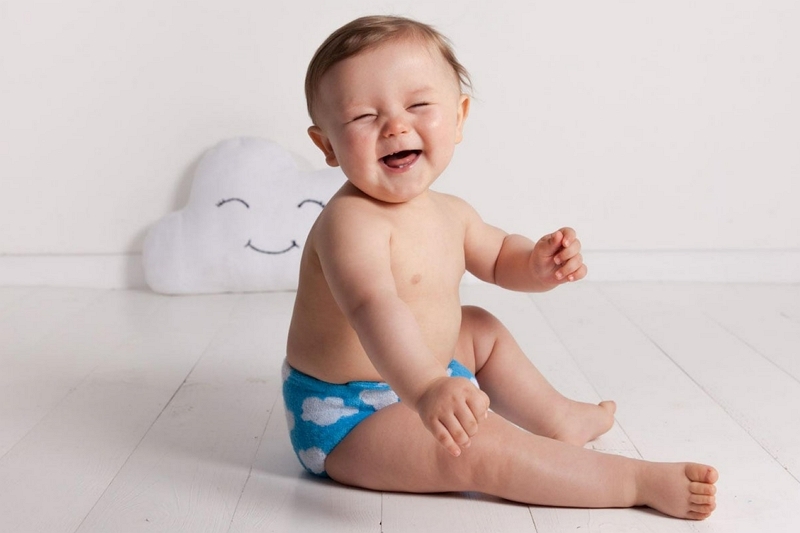How to stuff pocket diapers? There are a few different ways to stuff pocket diapers – you can use either prefolds or inserts.
If you’re using prefolds, all you need to do is fold them into thirds and place them inside the pocket diaper. If you’re using inserts, just place them in the pocket just like you would with prefolds. Make sure that the insert is placed in the correct spot so that your baby will be absorbent enough.

One of my favourite things about pocket diapers is that they can be adjusted to fit any baby’s needs. You can add more or less stuffing to make them as absorbent as your child requires, making it a versatile option for day or night time use.
Plus, when your child gets older and begins to wet the bed, you can adjust the diapers to fit larger inserts and continue using them for as long as necessary.
There are a few different ways to stuff pocket diapers – you can use either prefolds or inserts. If you’re using prefolds, all you need to do is fold them into thirds and place them inside the pocket diaper.
If you’re using inserts, just place them in the pocket just like you would with prefolds. Make sure that the insert is placed in the correct spot so that your baby will be absorbent enough.
What can I use instead of diapers?
There are a few different things you can use as an alternative to disposable diapers. You can use cloth diapers, which you can wash and reuse.
Alternatively, you can use diaper covers, which are made of waterproof fabric and go over disposable diapers. Finally, there are also some biodegradable disposable diapers available on the market. Whichever option you choose, be sure to do your research to find the best products for your needs.
Cloth diapers come in a variety of shapes and sizes, so it is important to find the ones that will fit your baby properly. There are several types of cloth diapers – all-in-ones, pocket diapers, prefolds with covers, and flats with covers. All-in-ones and pocket diapers are the easiest to use, but they also tend to be costlier.
Diaper covers come in a variety of sizes as well. They fit over disposable or cloth diapers with snaps, Velcro, or buttons for easy access when you need them on your baby’s bottom. You can find diaper cover patterns online if you want to make some yourself instead of buying them off-the-shelf at the store.
What are the side effects of Pampers?
There are a few side effects associated with Pampers that you should be aware of. First, they can sometimes cause skin irritation, especially if your baby is sensitive to the materials used in their construction.
Additionally, Pampers can cause diaper rash in some babies. Finally, they may also lead to urinary tract infections in rare cases. If your baby experiences any of these side effects, stop using Pampers and consult your doctor.
It’s important to keep an eye on your child for any potential side effects when using Pampers. If you notice anything out of the ordinary, discontinue use and talk to your paediatrician immediately. By being proactive and keeping an eye out for any problems, you can help ensure that your child experiences no side effects at all.
As with any product, it’s important to take the time to read over and review possible side effects before using Pampers on your baby. If you notice anything unusual or suspect that something is wrong, stop using them immediately and contact a medical professional for advice.
Be proactive in keeping an eye out for potential problems so that you can ensure they don’t occur when taking care of your little one!
You’ve heard about what the pros are; now let me tell you about some cons.
There have been reports linking pamper use to diaper rash as well as rashes between babies legs which could be potentially dangerous if not treated right away by a doctor .
When I asked my paediatrician about this he said that the rashes are caused by a lack of airflow which is why they occur in between the baby’s legs and not on his bottom.
The diapers have a specially designed design so that there are plenty of airflows allowing your child to breathe while still keeping them dry, but I guess it depends on how you fasten the diaper or place him down for sleep at night.
Another problem with pampers as well as other kinds of disposable diapers is waste. Pampers can take up to 500 years to decompose after being discarded into landfills, making their use an environmental hazard .
Many people argue against using disposable over reusable cloth because if everybody used disposables instead then we’d be facing an amount of garbage that could fill up the entire world .
While this is true, my opinion on disposable diapers has always been this: if it’s not worth reusing or recycling then I’m going to use it until there’s nothing left of it.
